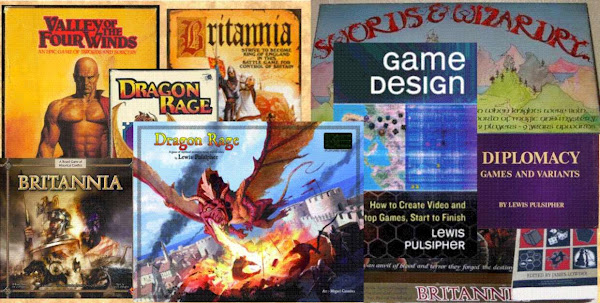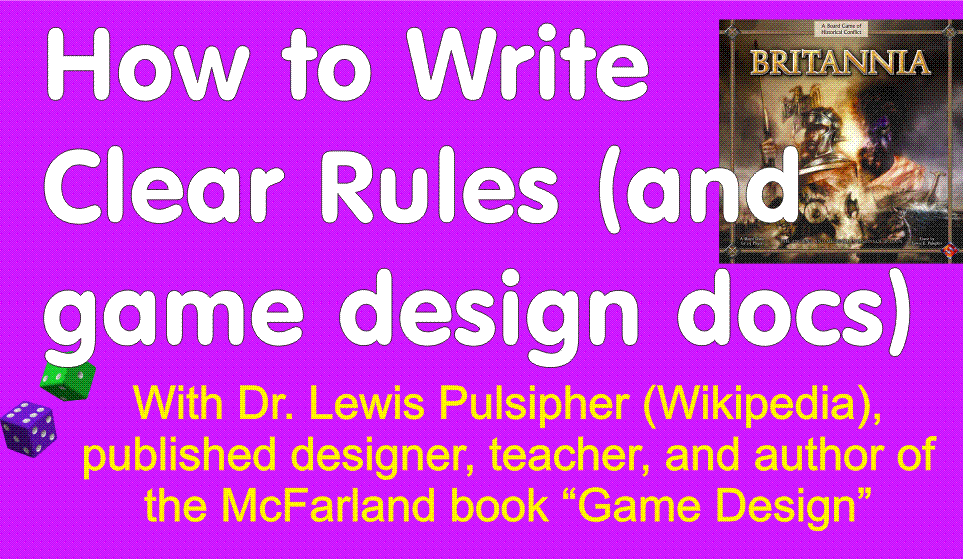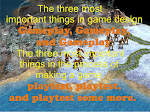Text of the slides: obviously there's more in the screencast than this.
Brief Examples of Playtesting a Modification
Dr. Lewis Pulsipher
PulsipherGames.Com
“Game Design” channel on YouTube
Late Stage Playtesting
At some point your game will be “mostly done”, well-playtested, but ideas for modifications will still come up
Maybe a few PTers will wish something were a little different
Now you can try such things
At this point it isn’t, “make the game good,” it’s “make the game slightly better”
You could say this is the last few percentage points of improvement
But many of the attempts will be rejected, if the game works well
Example
I have a “screwage” style pirate game, everyone has a hand of cards and a ship
It’s a combination of historical pirates and fantasy pirates (as in the recent Caribbean films)
Much of the action revolves around encounters with ships at sea
There are dice rolls for pursuit, for cannonfire, for boarding
Lots of dice rolls, all told
It’s more about the story than about strategy, but some people get frustrated with chance
A Solution?
So I said, we’ll let players trade in some of their loot for luck tokens
They can pay a luck token to reroll a die (but only once per event)
So we tried it
For the first two games, no one used them
Loot is pretty valuable, a good score is getting into double figures)
In the third game, the player who most got frustrated with chance did use them
But these players were accustomed to playing the game as it stood
What would others think who had never played before? I don’t know yet!
Optional Rules
So right now, I think of it as an optional rule
Many optional rules begin life as something that is tried, but only suits a minority segment of players
So it becomes an optional rule for those groups where that particular kind of player is common
Some people think there can be only one way to play a game
But then buy an expansion that changes how the game is played – but it’s “official”
Another Example
A 2-6 player space wargame, more or less
Players get points for destroying opponent worlds/systems as well as for holding systems at game end
For much of the game’s life, I gave double points for held systems over destroyed
But that tended to focus players on defense, and I wanted a more free-flowing, offensive game (there are reasons)
Experimentation
So I tried equal points for holding and destroying
But that made the game too offensively-minded
Even when I required that you hold at least one system at the end to score any points at all
So I settled on one more point per held system, than per destroyed system
But I’ve included the other two options in the rules for those who like to play more defensively, or more offensively
Don’t waste ideas when you can make them optional rules that satisfy a minority segment of players.










